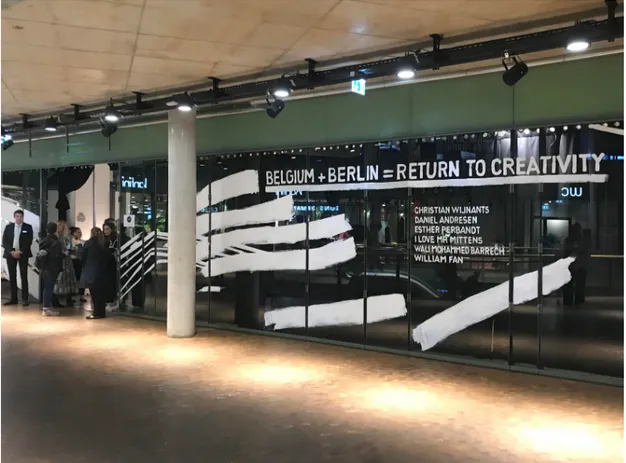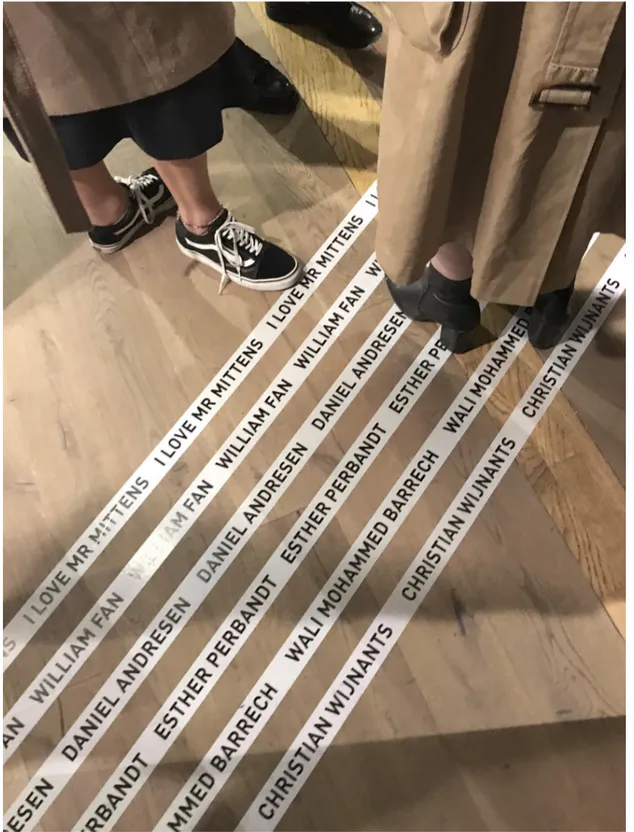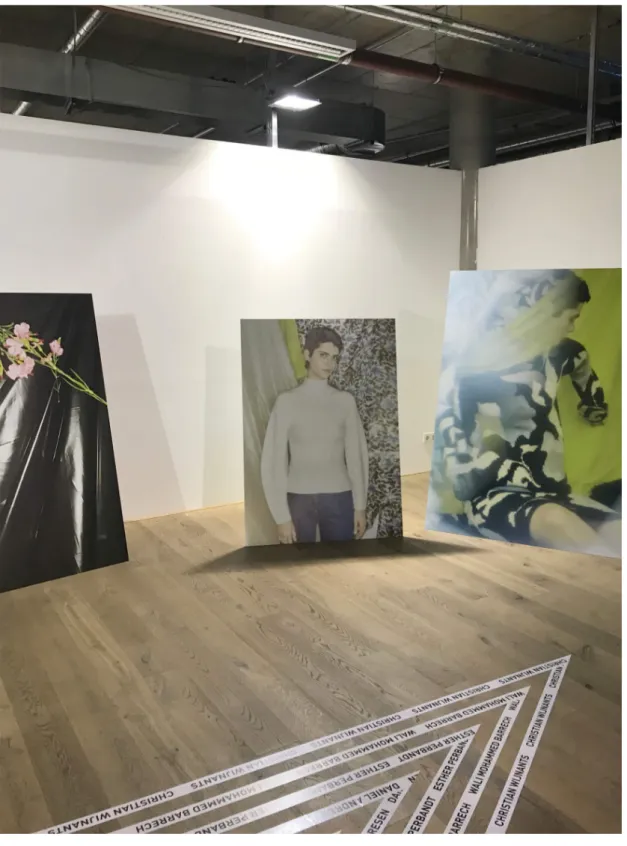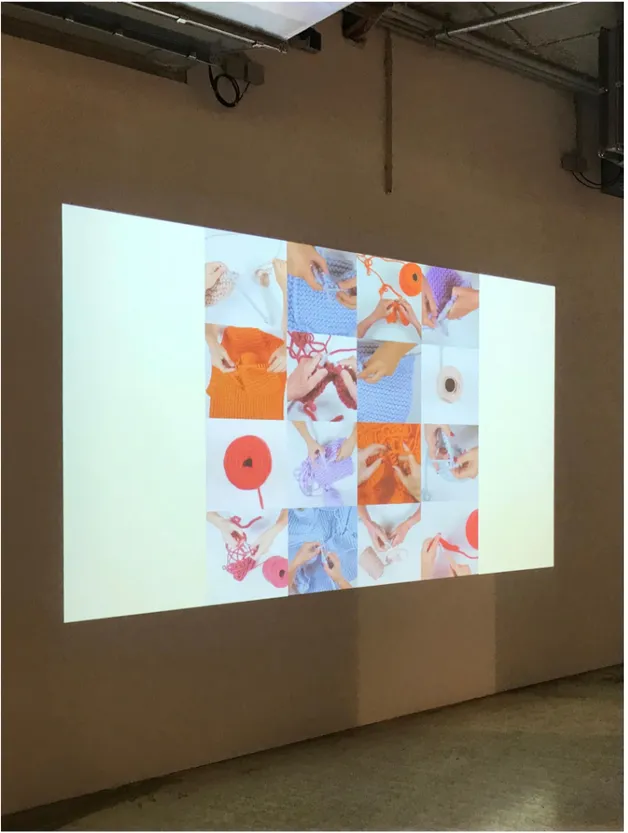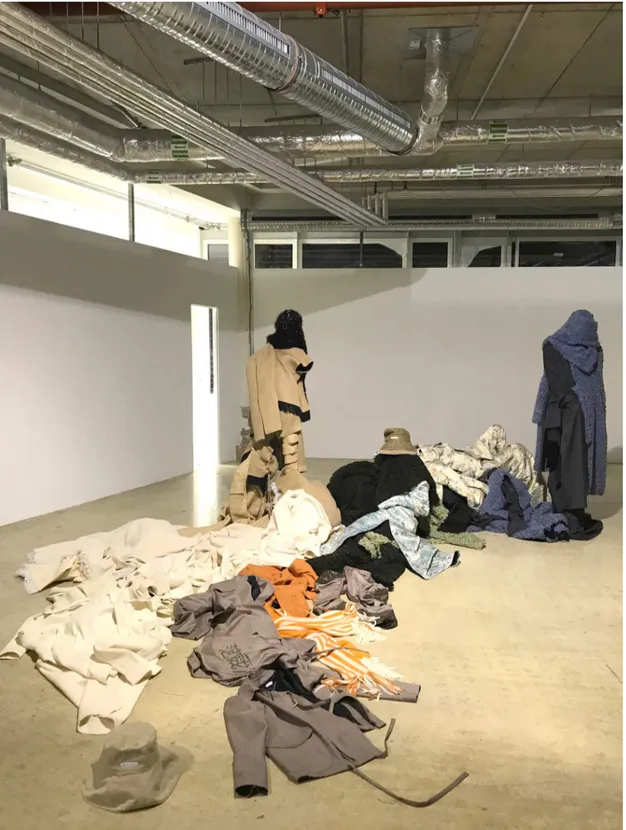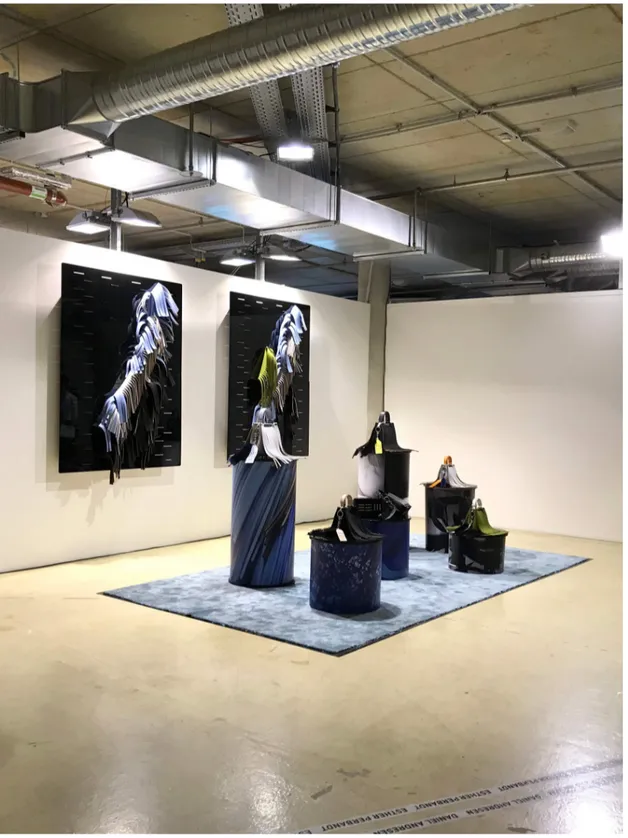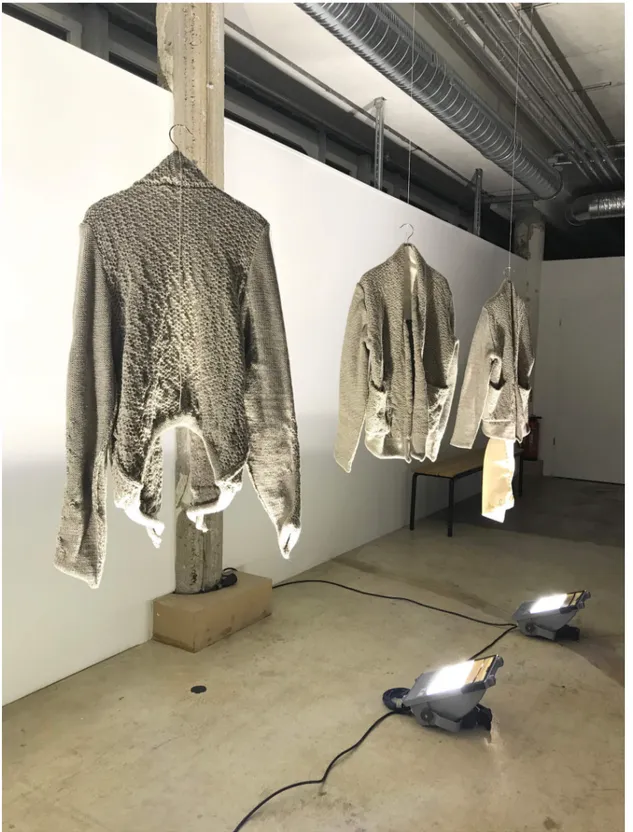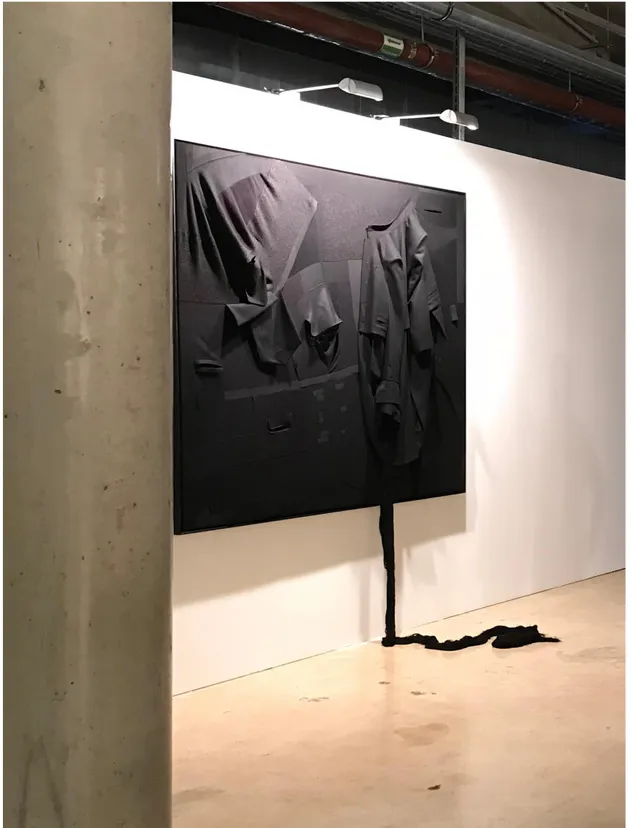Baskstage | Exhibitions
https://doi.org/10.6092/issn.2611-0563/8694
ZoneModa Journal. Vol.8 n.2 (2018) ISSN 2611-0563
Berlin Fashion News.
Belgium + Berlin = Return To Creativity
Lucia Balestri
*Published: December 21, 2018
Six fashion designers, two based in Berlin and four based in Belgium, were given the opportunity to showcase their creative visions with a focus on wool in Berlin, during the German Press Days on the 18th and 19thof November 2018, in the gallery space of the Bikini Berlin shopping centre (Fig. 1). The exhi-bition was organized by the Flanders District of Creativity together with the German Fashion Council and it was supported by The Wollmark Company. It consisted of a B2B event, to which only the press and relevant trade visitors could have access.
The showcased designers were Christian Wijnants (Antwerp), I Love Mr. Mittens (Antwerp), William Fan (Berlin), Wali Mohammed Barrech (Antwerp), Daniel Andresen (Antwerp) and Ester Perbandt (Berlin). They were invited to freely represent their creative work with an artistic installation, for which they would have a dedicated area. Visitors were led through the exhibition open space footprint by six tape bands running parallel to each other on the floor (Fig. 2). Every tape had the name of a designer printed on it and drove to each of the designated designers’ zones.
Christian Wijnants exposed ten free-standing large-scale prints of his collection lookbook (Fig. 3 and 4); the different dimensions of the images conferred dynamicity to the series, where the subjects themselves were playing with a diverse range of scale, including close up to materials, still life elements and full body shots.
I Love Mr. Mittens opted to project a video, showing various hand knitting processing techniques, where one could see sixteen pair of hands working on a different knitwear (Fig. 5); the screening under-lined the importance of handmade manufacturing as a key element for the label. In order to emphasise even more the uniqueness of each garment, the designer staged an installation of hanging outfits next to some overthrown shopping cart (Fig. 6), as a clear juxtaposition of the elevated handmade garment compared to mass produced objects.
Berlin Fashion News ZMJ. Vol.8 n.2 (2018)
Berlin Fashion News ZMJ. Vol.8 n.2 (2018)
William Fan designed an installation where clothes were arranged on the floor and on mannequins (Fig. 7). The unusual arrangement of the fashion objects, treated as conglomerated material, diverted atten-tion from shapes and pushed the visitor to focus on the fabrics, their textures and colours. Wali Mo-hammed Barrech put on display his products on pedestals, in front of their same leather decorations exhibited on canvas (Fig. 8); the trimmings on the wall were bigger though, and made the products look as miniatures of the art pieces.
Daniel Andresen hanged his knitwear pieces in the air and lit them from underneath (Fig. 9): as a result, one could appreciate both the loose cut of the garments and the weft of the fabrics, thanks to the play of light and shadows. They looked like spirits dancing in the air to the sound of the knitting machines. Esther Perbandt created an art installation where she overlapped pieces of black garments onto a canvas (Fig. 10). Placing together different materials of the same colour allows to better appreciate their grain and structure and to notice how the dye behaves variably depending on the fabric.
The six installation provided a glimpse on the importance of the materials used for the collections and on the manufacturing process. According to the briefing they were given, to focus on wool, the designers showcased their collections with a clear-cup perspective on fabric. In addition to the art installations, all the designers also showcased their products on clothes racks (Fig. 11 and 12), so that visitors could see the garments more in detail. This element highlighted the physicality of the collections, allowing people to touch and feel them and created an interesting contrast between the art pieces and the fashion products. Even if they consisted of the exact same pieces of garment, the way they were exhibited made visitors experience them in two completely different ways. The products showcased in a museum-like set entered in the realm of art and were considered as untouchable, visitors only experienced them from a certain distance, admiring the designers’ installations. On the other hand, products hanging on racks were recognized as something closer, intelligible and accessible. It has to be kept in mind that the event was organized by the Flanders district of creativity and the German Fashion Council, two organizations that support, promote and connect the fashion industries, and promoted by the Wollmark Company, the global authority on wool. The aim of the exhibition was to support creativity and talented potential, showing the artistic side of fashion, through installations, but also pushing international Wollmark prize locally and highlighting craftmanship, through the showcase of garments.
Another main aim of the event was to consolidate cultural synergies between Germany and Belgium: the title of the exhibition itself highlighted internationalization, intercultural exchanges and across borders culture. Nevertheless, there was nothing in the actual exhibition set up that pointed out this aspect. The chosen designers have various and international backgrounds, that indeed represent across countries education and inspiration. Nevertheless, none of them explicitly referred to their country of origin or country of production within their installations. In relation to this, it is interesting to notice how the title of the event put the capital city of Germany, in relation to a whole country, Belgium. All the Belgian labels included in the exhibition are based in Antwerp, therefore one has to wonder why the title wasn’t “Antwerp + Berlin”. The last part of the exhibition was dedicated to a video (Fig. 13) showcasing a number of Belgian fashion designers, including, but also beyond the Antwerp Six. This reflects the organizers’ intention to emphasize what Belgian fashion stands for today, across generation. Therefore, the choice to put at the centre of attention the whole country of Belgium, instead of only the fashion capital of Antwerp, to bring attention to Belgian Fashion, to its contributors – the designers and labels – but also to empower its overall image.
Unfortunately, the exhibition was opened in a narrow time frame of only two days exclusively to Ger-man press, buyers and sector influencers, not to the general public. In spite of the location chosen, the gallery space of a crowded shopping centre located in a central area of the city, the event missed an op-portunity to present Belgian fashion designers to the attention of a wide public.
Berlin Fashion News ZMJ. Vol.8 n.2 (2018)
Berlin Fashion News ZMJ. Vol.8 n.2 (2018)
Berlin Fashion News ZMJ. Vol.8 n.2 (2018)
Berlin Fashion News ZMJ. Vol.8 n.2 (2018)
Berlin Fashion News ZMJ. Vol.8 n.2 (2018)
